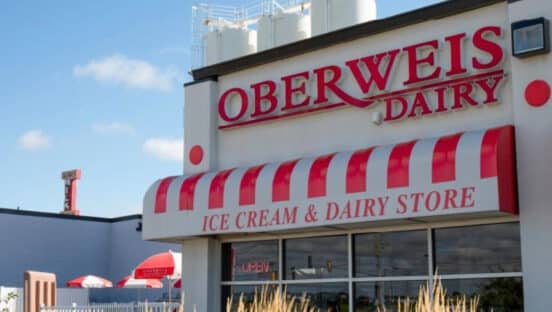
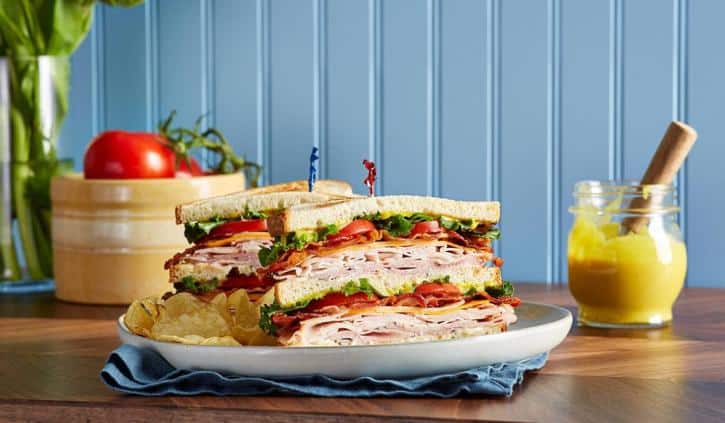
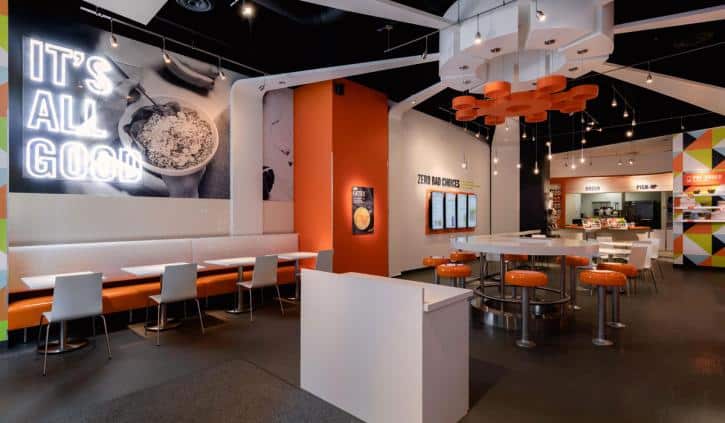

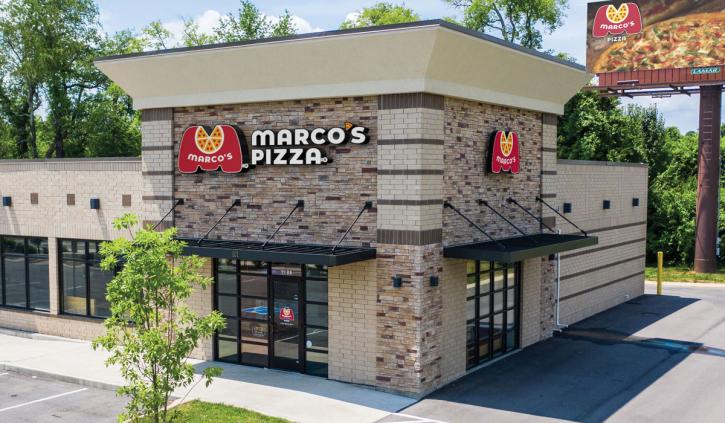


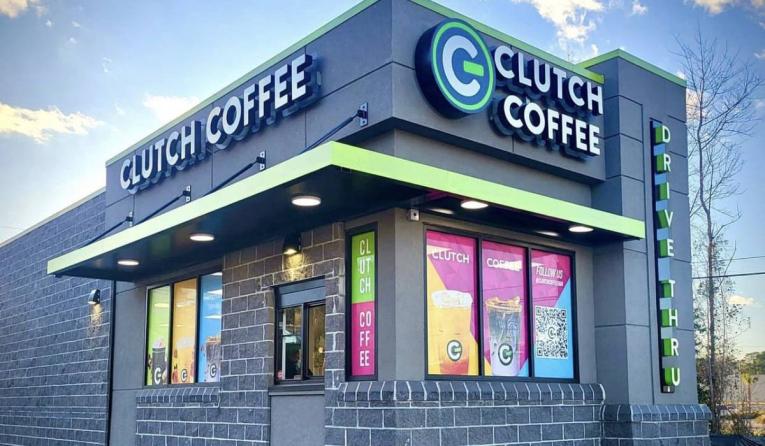
Nearly a month into 2024, it’s never too late to add some additional crystal ball thoughts into what’s ahead. Here are seven bonus predictions for operators going into another eventful calendar.
More 2024 predictions
Restaurants Brace for the Most ‘Normal’ Year Since 2019
The Restaurant Lessons We Learned in 2023
The Restaurant Innovations Here to Stay in 2024
What’s the Big Restaurant Tech Trend Nobody is Talking About Yet?
Fast-Food Trends for 2024: The Age of Automation and Customer Experience
What the Past Tells Us About What’s to Come for Restaurants in 2024
Application of AI and Big Data
Jim Holthouser, Chief Executive Officer of Focus Brands, the parent company of Auntie Anne’s, Carvel, Cinnabon, Jamba, McAlister’s Deli, Moe’s Southwest Grill, and Schlotzsky’s
The application of AI and big data will increasingly be the differentiator and a key driver of performance for quick-service brands in 2024 and beyond.
If you don’t invest in this, you will be left behind. This is an important window to buy competitive advantage and differentiate your brands. The reality is, consumers have given us permission to talk to them—when we talk to them with personalized communication, offers, etc., it’s because they want us to and even expect it now.
At Focus Brands, we are constantly thinking through new applications for AI and the collection plus responsible, efficient use of data. We’re able to do this by leveraging our scale – the power of portfolio and building a platform company.
Time to shift mindsets—taking an offensive tactic with digital data will propel your brand ahead in 2024.
Blurred Lines
Jeff Drake, CEO of Protein Bar & Kitchen
As someone who has been a part of the fast casual space for more than a decade, the biggest trend I see for 2024 is the blurring line between quick service and fast casual.
We’ll continue to see quick-service brands attempting to elevate their culinary experience while fast casual is continuing to find ways to deliver convenience, which is a basis of quick service.
For example, more fast casual brands are beginning to prioritize drive-thru locations, including Protein Bar & Kitchen.
Simplified Kitchen Operations
Larry Linen, COO of HOA Brands, parent company to Hooters and Hoots Wings.
With simplified kitchen operations, comes flexible store footprints—a trend may restaurant brands are looking to lean into.
In 2024, we’ll see brands look to streamline kitchen equipment and overall operations in order to allow for more store models. This might include multiple innovative conversion plans for second generation space and/or a line of smaller footprint prototypes.
With simple kitchen operations and equipment, along with flexible floorplans, our builds are an ideal fit for conversion opportunities. Advantages include reducing build-out costs, minimizing construction timelines, and entering saturated markets with ease.
Technology as a Customer Service Tool
Rick Stanbridge, Executive Vice President and Chief Information Officer of Marco’s Pizza
Customer service has evolved far beyond a simple transactional behind the counter experience between employee and customer. In this era of digital, third-party, speed and convenience, brands need to rethink customer service to go beyond the counter in order to fuel long-term growth and strong performance.
As the quick-service world has shifted to DELCO and third party, it’s essential to put a greater emphasis on quality, speed, and order accuracy.
When it comes to quality, it means a high-quality product, menu variety, and menu innovation.
Speed and order accuracy can be emphasized through the prioritization of technology and proper team member training. For example, at Marco’s, we’re currently leveraging a 100 percent cloud-based proprietary technology platform—Marco’s Order Management System (MOMS) that is specifically designed to improve the customer experience as well as simplify operations. The fully integrated system supports payment processing and the POS system, with integrated conversational ordering, labor scheduling, inventory management, and a cloud-based reporting dashboard with centralized data management capabilities. We’re also testing the use of AI for generating automated promise times, a voice-to-text initiative, and new last-mile food delivery mobility solutions—such as autonomous and electric solutions—in collaboration with Magna.
This is not to say that traditional in-store customer service tactics are going away—the front line, in-store team still has a massive effect on customer service. In today’s modern era, it’s important to find that balance between a traditional approach and one that meets the evolving needs and expectations of customers.
Transition in Ownership
Robin Gagnon, CEO and cofounder of We Sell Restaurants
The impending wave of retirement among baby boomer restaurant owners could lead to a significant number of restaurant owners selling in 2024. This trend coincides with the stabilization of the labor market and sales, returning to pre-pandemic levels.
Are franchisors prepared? Franchisors should not ignore the Silver Tsunami headed their way. A plan should be in place to make this a primary focus.
Understand the age and risk of owners and prioritize outreach to Baby Boomers, particularly for stores reaching the end of their renewal term.
Exit strategies should be part of the discussion in every meeting with Franchise Business Consultants.
Do not rely on existing franchisees and multi-unit heavy hitters to take up the slack and buy these transfer units. Why? Look at the profile of these owners in your brand. Most are from the Baby Boomer generation. Many are in the five-to-ten-year window to exit rather than acquisition mode. Secondly, there simply are not enough of them to acquire the Tsunami of units you should be anticipating.
Time to Double Down
Jenifer Kern, CMO at Qu
Doubling Down on Efficiency. Restaurant chains will continue to find creative AND traditional ways to combine technology and good old-fashioned smart restaurant processes to drive cost and labor efficiencies for operating their restaurants in the most profitable manner in 2024. This may mean adding kiosks to optimize/reallocate labor; improving employee training and operations processes to drive fulfillment/food delivery accuracies; or finding creative ways to drive customer love and loyalty.
Loyalty 2.0. Loyalty programs as we know them today will continue to struggle and new thought leaders plus new technologies will emerge with improved ways for driving customer acquisition and frequency. Upward of 70 percent of restaurants are looking to embrace new loyalty approaches (2024 State of Digital) and many are endeavoring to shift gears, putting more emphasis on “Experience Engagement”—finding new and unique ways to create unforgettable experiences for fans and new guests; as marketers strive to create more personalized experiences and marketing outreach using data.
Continued Consolidation & Platform Adoption. The push to unify and consolidate will continue with the larger enterprise and mid-market brands aiming to collect unified data and deliver unified experiences without breaking the bank (while driving efficiency). From unified commerce and CDPs to API-first and headless solutions, restaurant tech leaders and their marketing counterparts are getting more sophisticated and embracing open integrations, light-weight and agile platforms as the way forward due to real-time data access, speed, and ease of use.
The AI Conundrum. Operators will continue to research and track AI success stories with their restaurant peers to appease senior leadership but AI will be slow to catch hold and create real ROI value for the majority of LSRs this year. Closest to making sizable adoption is AI for improving real-time reporting capabilities; AI in the drive-thru; AI for voice automation (like Notify) and AI for restaurant marketers. The media will continue to hype AI success stories for the large marquee chains and more progress will be seen in 2025 and beyond.
Evolve and Innovate
Darren Spicer, cofounder, Clutch Coffee
Continued evolution (and debate) on using AI
There is a push in the industry to find innovative ways to harness the power of AI and its potential impact on the space. Certain brands will share that it will help them become faster, more accurate, and require less human capital. Other brands that are customer-centric (think Clutch, Chick-fil-A, Dutch Bros) place a premium on face-to-face human interaction, and will likely look to balance technology while maintaining a human touch.
Product Innovation
With the market getting more and more competitive, brands that can continue to innovate (unique food/beverage offerings) will stand out and grab business from a cooling customer segment. Simple things such as consistently awesome LTOs will be at a premium in 2024.
Speed and Convenience: Preparing for increasing workforce return to office
As more and more companies are requiring their employees to in-office, quick-service brands that can dominate speed and ease of access will separate themselves. Mobile ordering will continue to push in this space, and finding ways to ‘make it easy’ for someone to order and get their food/bev will be a top priority.













